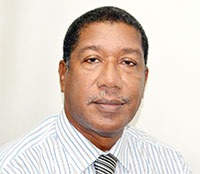I CANNOT sincerely dispel the importance of alternative medicine, although I must confess that I am not a consummate user nor a supporter of its widespread use. For example, why is it that despite in Jordan, Saudi Arabia and the United Arab Emirates, there is no significant water fluoridation nor comprehensive preventative programme, yet the population enjoy relatively good oral health? The answer to that question involves a practice that most of the world probably considers primitive – the use of neem chewsticks.
Dental caries and gum disease determine the level of oral health status of a person. Unfortunately, such diseases are so common that eventually, every adult in the world has one or both. Therefore, these two diseases can be considered real public health problems.
In general, every country has and should have its own system to prevent and cure its nation from diseases according to its resources and culture. I have always suggested through this medium that the government should establish a National Agency for Disease Control. Dentists and physicians trained in the Western scientific systems usually have views on the prevention of oral and general diseases that differ basically from those of local communities.
Surprisingly, instead of focusing on and knowing the real causes of the two major dental diseases (which are simply dirt and diet) and instead of directing all the efforts to invent and encourage the use of effective tools to prevent and control these two diseases effectively, the profession has fallen in treatment which consumes too much time, resources, effort and money.
Chewing sticks are commonly used in Jordan, Saudi Arabia and the United Arab Emirates for oral hygiene, religious and social purposes. A few months on a visit to the USA, I observed various brands of neem chewsticks selling in some major supermarkets in New York and Miami.
Here at home, some years ago, especially in rural areas, the chew stick was popular. Black sage and neem stalks were commonly used to clean one’s teeth. The most studied chew sticks are the Miswak, Fagara, Zanthoxyloides, Serindeia wernikei, Neem, Paku and Acaccia arabica. Research was conducted mainly in Nigeria, where 90 percent of the population uses the chew stick. In India, one can buy a neem chewstick in numerous stores.
The World Health Organization (WHO) has recommended and encouraged the use of these sticks as an effective tool for oral hygiene. The experts confirmed that the toothbrush is not superior to the chew stick as regards its capacity to remove dental plaque.
The juice extracted from most chew sticks has been found to have strong antibacterial activity against some oral Staphylococcus aureus and Anaerobic Streptococcus. The use of the chew stick is entirely consistent with the Primary Health Care (PHCA) Approach Principles, particularly that of a focus on prevention, community participation and appropriate technology. By using it, the notion of self-reliance can be encouraged and implemented in poor countries where it is available locally and does not need technology or expertise, or extra resources to manufacture it. It can be used by both children and adults. Thus, it is appropriate for all societies. In fact, I recall that in the late 1980s a Minister of Health told me he was seriously contemplating introducing the chew sticks as part of our oral health programme.



.jpg)









